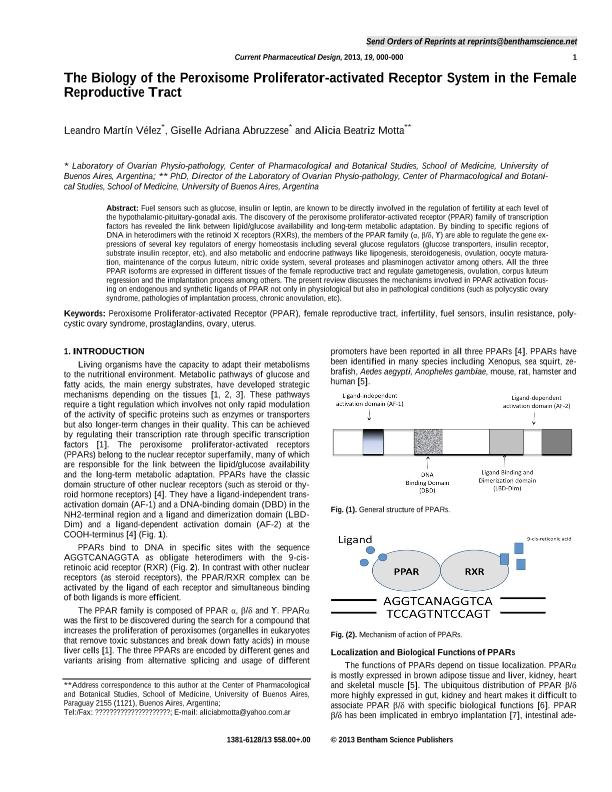Artículo
The Biology of the Peroxisome Proliferator-activated Receptor System in the Female Reproductive Tract
Fecha de publicación:
04/2013
Editorial:
Bentham Science Publishers
Revista:
Current Pharmaceutical Design.
ISSN:
1381-6128
Idioma:
Inglés
Tipo de recurso:
Artículo publicado
Clasificación temática:
Resumen
Fuel sensors such as glucose, insulin or leptin, are known to be directly involved in the regulation of fertility at each level of the hypothalamic-pituitary-gonadal axis. The discovery of the peroxisome proliferator-activated receptor (PPAR) family of transcription factors has revealed the link between lipid/glucose availability and long-term metabolic adaptation. By binding to specific regions of DNA in heterodimers with the retinoid X receptors (RXRs), the members of the PPAR family (α, β/δ, γ) are able to regulate the gene expressions of several key regulators of energy homeostasis including several glucose regulators (glucose transporters, insulin receptor, substrate insulin receptor, etc), and also metabolic and endocrine pathways like lipogenesis, steroidogenesis, ovulation, oocyte maturation, maintenance of the corpus luteum, nitric oxide system, several proteases and plasminogen activator among others. All the three PPAR isoforms are expressed in different tissues of the female reproductive tract and regulate gametogenesis, ovulation, corpus luteum regression and the implantation process among others. The present review discusses the mechanisms involved in PPAR activation focusing on endogenous and synthetic ligands of PPAR not only in physiological but also in pathological conditions (such as polycystic ovary syndrome, pathologies of implantation process, chronic anovulation, etc).
Archivos asociados
Licencia
Identificadores
Colecciones
Articulos(CEFYBO)
Articulos de CENTRO DE ESTUDIOS FARMACOLOGICOS Y BOTANICOS
Articulos de CENTRO DE ESTUDIOS FARMACOLOGICOS Y BOTANICOS
Citación
Velez, Leandro Martin; Abruzzese, Giselle Adriana; Motta, Alicia Beatriz; The Biology of the Peroxisome Proliferator-activated Receptor System in the Female Reproductive Tract; Bentham Science Publishers; Current Pharmaceutical Design.; 19; 25; 4-2013; 4641-4646
Compartir
Altmétricas




